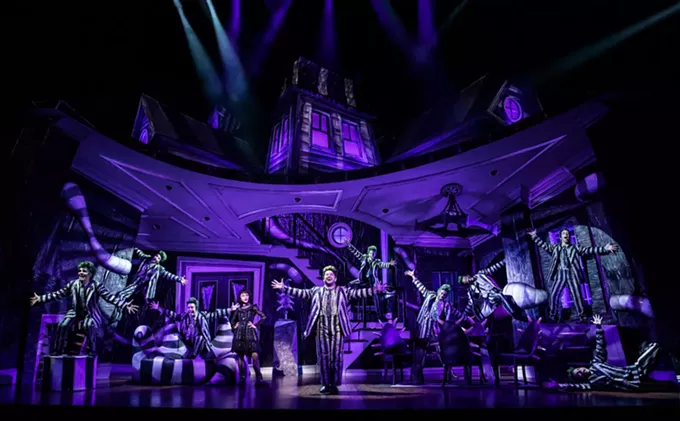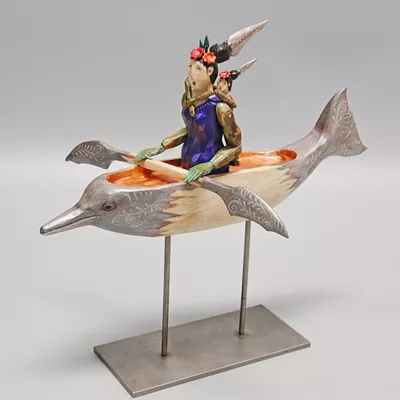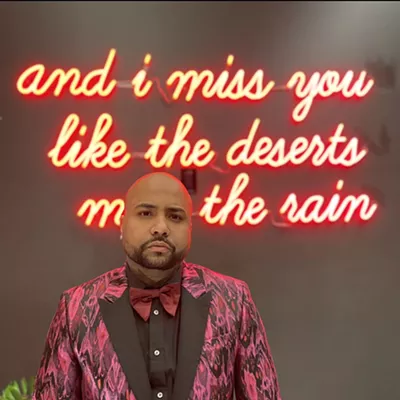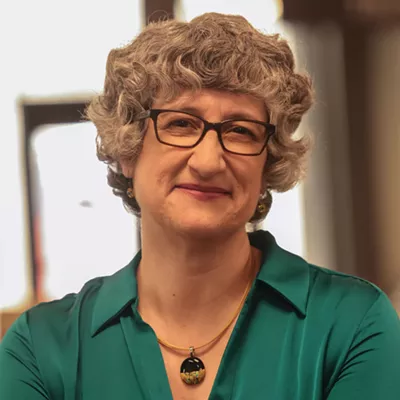Emmy-winning set designer David Korins has worked on over 25 Broadway productions, including “Hamilton.” As part of this work, he creates miniature versions of sets, with pieces that match his plans for staging.
The Mini Time Machine Museum of Miniatures will showcase his work as part of the immersive exhibit “Stages of Imagination: The Iconic Broadway Designs of David Korins.” It will be on display from Friday, September 20 to Saturday, May 31.
Along with Broadway shows, Korins has also designed scenery for the Academy Awards, won an Emmy Award for his production design on “Grease Live,” served as creative director for “Immersive Van Gogh,” done production design for “Last Week Tonight with John Oliver” and “The Big Brunch” with Dan Levy and worked on the “Immersive Disney Animation” exhibition.
He is based out of New York and owns a company bearing his name, Korins Studio, which he started in 2001. He began doing set design in college.
Korins and his team document every single step of their process for each show. They often share videos of it on social media.
The miniature exhibit will focus on five Broadway shows Korins has worked on, including “Hamilton,” “Beetlejuice,” “Dear Evan Hansen,” “Here Lies Love” and “The Who’s Tommy.”
“Each one of these shows is sort of like its own time capsule. It’s very powerful to go back into our archives, look at the work that we did and think about the processes that we took to get there. Part of my goal with this project is to pull back the curtain on the making of all of the thousands of decisions that go into making a show,” Korins said. When most audience members see the show, they see the finished version, and they never know all of the extraordinary artwork and all of the things that could have been.”
Korins said although he has worked on different types of projects, theater has always been one of his greatest passions.
“We tell these really important stories that are meant to challenge people and change their minds and their hearts. These five projects are all extraordinarily unique and very different,” Korins said.
For the show “Here Lies Love,” the theater was turned into a disco club, with moving platforms.
Korins said the miniature versions help the creative team in designing the sets.
“In the theater world, we use miniature models to help the director and some of the performers understand what is going on in the show. It’s kind of like the way architects use models….You can’t really recreate to the depth of what the full-scale is, but they are extraordinarily detailed. They are used as tools to be able to show the collaborators what they’re going to look like,” Korins said.
The exhibit incorporates scale models with miniature set pieces, behind-the-scenes photos and videos, sketches and concept designs.
“If you want to know what my very first impulse was for a sketch or a design for one of these shows, all that original artwork is there in that exhibition,” Korins said.
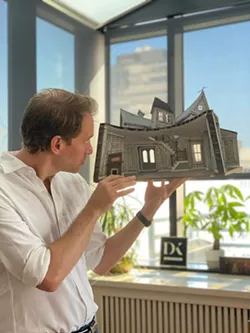
For “Here Lies Love,” he included a stop-motion animation video detailing the five-month load-in process.
The exhibit also features interviews with directors, writers, actors, modelmakers, painters and craftspeople involved in the different shows, including “Hamilton” creator Lin-Manuel Miranda, Angelica Schuyler,0 “Hamilton” actress Renée Elise Goldsberry and “Dear Evan Hansen” composer Benj Pasek.
“It was interesting to get people’s take on what it felt like to either perform on these designs or to be part of making them,” Korins said.
There is also a recreation of a studio desk with a display of the model-making process from start to finish.
“You get to see one piece go from drafting all the way through to a full-color model,” Korins said.
Korins said the models have architectural details such as the type of furniture, lighting fixtures, rugs, ropes and pulleys used in the shows.
Mini Time Machine Executive Director William Russo said that the models even incorporate details such as a few rows of theater seats.
“If you kneel down and put your eyes at the right point where that center row of seats is, it will look exactly like it does when you’re sitting in the theater. Every detail that you see in production has been carefully chosen and picked through the model process,” Russo said.
Guests will also get a chance to see preliminary versions of models, which informed the full-color models.
“Before we spend all that time, effort and money on making that final version, we usually work through rough models…Once you figure out the scale, composition, line and proportion, then you start moving into color explorations…You continue moving and then eventually make a color model,” Korins said.
In the exhibition, models will be displayed in large-scale recreations of sets. This includes a recreation of the “Beetlejuice” couch.
“You can really see how what was developed in the model process makes it onto the final product. It really is amazing to see how the details in that model are in the full-sized version,” Russo said.
Korins said the exhibit gives greater insight into the collaboration that happens behind the scenes between different creatives to bring to life major Broadway productions.
“I’m in charge of the set design, but it’s a real collaboration. There’s many many artists on the collaborative team,” Korins said.
During the exhibit, Korins will be in residency for several weeks, hosting master classes, design workshops and a fireside chat; offering behind the scenes tours and acting as a resource for young people and other artists.
“I feel like these exhibitions and these museum installations are really an introduction and a really great way to begin a conversation, but they aren’t the final conversation. Whenever I go and put a project up in a city, I try to invest my time and energy as much into the local community as I can,” Korins said.
Fans have had a chance to make their mark on the exhibit as well. Also on display will be models and sketches from fans from the United States and the United Kingdom, who have been inspired by Korins’ sets.
One image shows a “Hamilton” set model made out of gingerbread, complete with a turntable.
Along with Korins’ exhibition, the miniature museum has more than 300 miniature houses and roomboxes on display, which tell the story of different time periods and places in the world.
The permanent collection includes antique dollhouses going back to 1742.
Before coming to the museum, Russo worked in the theater world from around 1997 to 2013. He collaborated with Korins on productions in New York at Playwright Horizons in the early 2000s.
“Whenever you worked with David Korins, there would be some issue in the design of the play that was a big challenge… David always had the most ingenious and inventive solutions. I always wanted to work with him again,” Russo said.
In the past, he said, the museum had a display on set design, but it was more focused around university and regional theaters.
Russo, who has been with the museum for a little over a year, wants to expand on the types of exhibitions shown.
“I’m excited to bring different aspects of how miniatures are used by other industries… I think with miniatures, what helps is you can take this big world and shrink it down so you have more control of it, but you can also see the details and the big picture at the same time,” Russo said.
According to Russo, visitors are often surprised by what they find at the museum, and he hopes to continue to keep them guessing.
Visitors come for special exhibits and find other things in the museum that interest them.
“We bring people here who are intrigued by something specific. I know the museum will do the rest of the work for us,” Russo said.
Stages of Imagination: The Iconic Broadway Designs of David Korins
WHEN: 9 a.m.-4 p.m. Tuesdays-Sundays. Friday, September 20-Saturday, May 31
WHERE: The Mini Time Machine Museum of Miniatures, 4455 E. Camp Lowell Drive, Tucson
COST:$15 for adults 18 to 62, $13 for seniors 62 and older and college students, $9 for children 4 to 17, $13 for active-duty military and veterans
INFO: 520-881-0606, theminitimemachine.org

